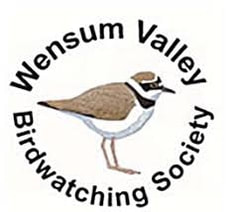|
Speakers: Stephen Vickers and Kirsty Franklin Reporter: Cath Robinson We were treated to a really interesting evening’s entertainment by two impressive and enthusiastic naturalists. Ringing in Norfolk Stephen gave a background to ringing in general: more than 1 million birds are ringed annually in the UK with > 3500 active ringers. He then spoke of his experience as a Norfolk ringer joining the established UEARG (Ringing Group) in 2018 since when >13,000 birds have been ringed. 100 metal rings have been recovered over this time. Apart from mist netting they also use the technique of Dazzling: using torches, landing nets and thermal imaging focussing on Norwich city green spaces and particularly Bowthorpe Marshes. This technique is especially good for finding Woodcock and Jack Snipe: using thermal imaging they have found 20 of each species each winter. 20 Jack Snipe!! Impressive for somewhere so close to the city.
He then particularly mentioned 4 local projects:- 1) the Norwich Swan project. Starting in Summer 2020 he has ringed over 200 birds (with a red ring with number beginning with a 4 and received 2.5K records. Interestingly the birds, ringed at Whitlingham and near the Football stadium, tend to keep to the Yare valley and don’t venture up the Wensum. 2) Black-headed gulls Ringed 137 with a blue ring. Adults seem very site faithful. Ringed in the winter they fly east (at least one to St Petersburg) and return every year to the same place. 3) Barnacle Geese 740 ringed 4.5K records. In Norfolk there seem 2 populations: Holkham with 500 and Pensthorpe with 100. They fly to Southwold for the winter and return to Norfolk to breed. But interestingly there are more in Suffolk than from Norfolk or other known UK sites so maybe some are coming over from Europe. 4) Norfolk Whooper Swans. WWT used to run Whooper colour ringing for years but have recently stopped. Stephen has this summer colour ringed (white)some in Iceland and hopes to see them in Norfolk this winter. Help him by reporting colour ringed birds: Mute swans: google Norfolk Swan project Other water birds: waterbirdcolourmarking.org Questions raised interesting thoughts about neck collars (not used that much) and the value of continuing to ring high numbers of blue tits. Round Island Petrels If you can’t remember, Round Island lies off the coast of Mauritius in the Indian Ocean and has been a nature reserve since 1957 after an eradication campaign led to a massive reduction in predators and improvement in habitat. It is globally important for some seabird populations. The Round Island Petrel, one of the tubenoses, was first discovered breeding there in 1948 and has bred successfully since the eradication programme. Genetically it is a hybrid of 3 petrels: Trindade Petrel, the Kermadec Petrel and the Herald Petrel. It breeds all year round with peak egg laying August-October. It has low breeding success but a higher success rate in the off-peak period. Overall numbers are increasing. It has been intensively studied for 14 years with ringing and geolocator history. The geolocator records sea temperature and light levels so the flight paths can be calculated and for some birds there is a 5-year history of flight pattern. Using this information Kirsty was able to divide the population into 9 subgroups with different flight paths each group seeming to be faithful to its pattern. Was this a function of their different genetics? Maybe. To determine nest success Kirsty set up a number of timelapse cameras which could encompass several nesting sites. 10 timelapse cameras took hourly photos for 18 months: She had 180,000 images to analyse! She considered 3 approaches to do this. One was manual processing: incredibly labour intensive but she and a helpful student did look at a subgroup. She also tried Citizen Science getting volunteers to look at a set of images. Comparisons with her own counts showed that citizen science could work well for close views and of chicks and eggs but she needed more experienced viewers for more distant shots and adequately locating adults. Ideally some form of AI may help in the future, but she is hopeful that the learning from her work will help others in the future. I think we were all very impressed by both Stephen’s and Kirsty’s enthusiasm and found their presentations really stimulating. They declined a fee suggesting we give a donation to charity and were delighted when we suggested giving it to our tern raft appeal.
0 Comments
Leave a Reply. |
Please feel free to read through our reports from our monthly indoor / online meetings. Archives
May 2024
Categories |

 RSS Feed
RSS Feed
